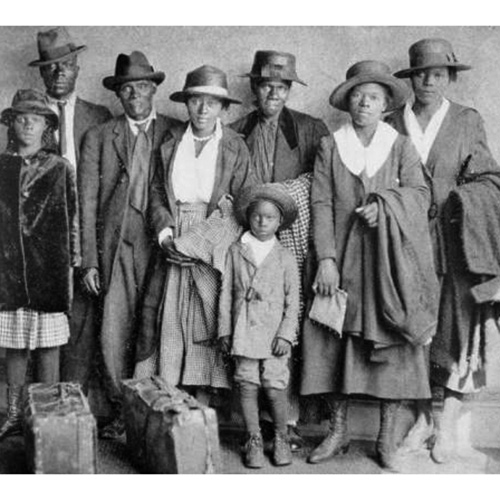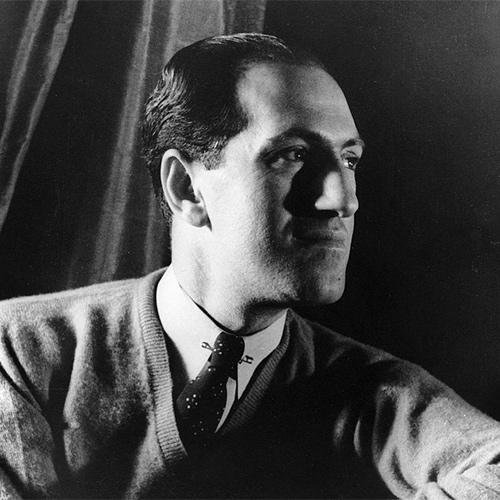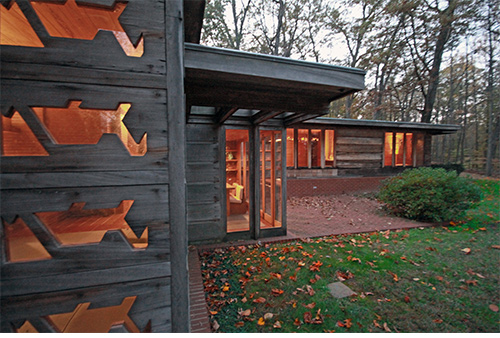With Independence Day on the horizon, we're unfolding the digital picnic blanket for a feast that features an assortment of American-themed programs. They include stories of journeys from south to north (and back again), homes designed for first families and middle-class ones, creative families who captured our national spirit in song and art, and why bleacher seats are a hot new eating destination.
They're among the offerings designed to make sure you continue to enjoy what you,ve come to value from Smithsonian Associates: programs and experiences that are entertaining, informative, eclectic, and insightful.
Food That Hits a Home Run
 Chef Dayanny de la Cruz (Photo: Matthew Noel)
Chef Dayanny de la Cruz (Photo: Matthew Noel)
This February, Dayanny de la Cruz was the Super Bowl's MVP, at least in the eyes of 22,000 hungry fans. As executive chef at Miami's Hard Rock Stadium, she oversaw all the day's culinary offerings. The bountiful array of fan food choices reflected both the diversity of Miami's population and the growing influence of new culinary traditions, fusions, and experiences seen in today's stadium food across the country-from the Miami Mex hot dogs and Cubano sandwiches served at Tropicana Field in Florida to the Tex-Mex cuisine at Yankee Stadium. And family says de la Cruz, who was born in the Dominican Republic, plays a big role in that mix: "Our family created all the memories around the table. I believe they gave me all the flavors."
De la Cruz is the recently announced guest chef in the first event in the Cooking Up History series presented by Smithsonian Associates and the Smithsonian's National Museum of American History on Monday, July 26. The Smithsonian Associates Streaming program celebrates the opening of the American History Museum's exhibition ¡Pleibol! In the Barrios and the Big Leagues as de la Cruz prepares a meal that represents Latinos' culinary cultures and heritage of baseball-loving families. Get to know her in this brief video.
Plan to return for seconds (and thirds) as Cooking Up History spotlights the boundary-breaking Lena Richard, a Black New Orleans chef and entrepreneur who built a dynamic culinary career in the segregated South (Thursday, August 5) and the Chinese immigrants who made the tradition of stir-frying a permanent part of America's kitchen techniques (Thursday, September 30).
Register for the Program
Journeys North and South
 A Black family arrives in Chicago from the South, ca. 1919 (BlackPast.org)
A Black family arrives in Chicago from the South, ca. 1919 (BlackPast.org)
The Great Migration, the mass movement of mostly rural Black Southerners to urban cores across the country between 1916 and 1970, was one of the most important moments in American history and reconfigured the nation's politics, arts, and culture. As millions of people confronted the challenges of a new labor market, housing segregation, and Northern racism, African American communities redefined themselves as representative of Southern sensibilities and Northern realities.
In a Monday, July 12 Smithsonian Associates Streaming program historian Marcia Chatelain examines how the enormous social upheaval changed families, especially as they understood generational differences, gendered expectations, and the possibilities of realizing a better life in cities. She also explores the reasons why some left, some stayed, and how our lives today continue to be changed by the Great Migration.
A generation later, thousands of Black Americans began to made similar trips when they returned South to visit family, relying on the The Negro Motorist Green Book to travel safely at the height of segregation and the Jim Crow era. Journalist Alvin Hall and social justice trainer Janée Woods Weber used the historic guide published from 1936 to 1967 to inspire their own 12-day, 2,021-mile road trip from Detroit to New Orleans. In each place along the way, the co-creators of the Driving the Green Book podcast collected powerful personal testimony from locals including former Motown musicians, activists, politicians, professors, historians, artists, and others. In a Tuesday, July 27 program, they shed light on the communities that were created and thrived during time of the Green Book and share the stories of those who lived through the era, supported and uplifted each other, and fought for equality.
For another look at what navigating the segregated South looked like, view The Negro Motorist Green Book, an online exhibition developed by the Smithsonian Institution Traveling Exhibition Service (SITES). Created in collaboration with author, photographer, and cultural documentarian Candacy Taylor, it offers an immersive and highly personal overview of the reality of travel for African Americans in mid-century America.
The African American Great Migration
Driving the Green Book
White House Taste

In February 1961 Jacqueline Kennedy launched the most historic and celebrated redecoration of the White House in its history. She announced her plan to locate and buy the finest period furniture, with which the historical integrity of the executive mansion's interiors would be restored. Fueled by the intense fascination with the charismatic first family, the project had a profound effect on the popular American imagination and taste in interior furnishings.
James Archer Abbott and Elaine Rice Bachmann, co-authors of the new book Designing Camelot, discuss the 60-year legacy of one of the most influential interior design projects in American history in a Monday, July 26 Smithsonian Associates Streaming program. Drawing on photographs, first-person reflections, personal and public correspondence, and media accounts they present detailed room-by-room analyses of the restoration and share stories about the people involved and insights into the choices made.
Throughout its history, the White House has served as a notable setting for grandly scaled entertaining. Early presidents recognized the important function wine played in those occasions. Some appreciated and enjoyed wine, others considered it merely a ceremonial necessity. Still others campaigned to outlaw wine and banned it from 1600 Pennsylvania Avenue; their successors celebrated its return. More recently, all presidents, regardless of whether they were wine aficionados, have used the White House as a venue to showcase the fine wines produced in the United States. In an illustrated conversation on Wednesday, September 29 Fred Ryan, Jr., author of Wine and the White House: A History, is joined Richard Kurin, a Smithsonian distinguished scholar, for an informative and entertaining evening perfect for devotees of presidential history, lovers of wine, or both. Cheers to the chief!
Jackie Kennedy's White House Restoration
Wine and the White House
It Runs in the Family
 George Gershwin, 1937, by Carl Van Vechten (detail)
George Gershwin, 1937, by Carl Van Vechten (detail)
The title of 1918 tune by a pair of New York City brothers making their first foray into Broadway declared "The Real American Folk Song (Is a Rag)." In just a few years, that parenthetical phrase could have rightly been changed to (Is by the Gershwins). George and Ira had a collaborative genius for capturing-and shaping-the mood of the early decades of the last century, from the emerging exuberance of the post-WWI years to the fizz and frivolity of the heyday of the 20s to the cocktail of melancholy and romance that marked the Depression era.
In a Thursday, July 15 Smithsonian Associates Streaming program American music specialist and Gershwin scholar Robert Wyatt reviews the lives of the Gershwin brothers, from their simple roots, through their Tin Pan Alley apprenticeship, to the glory years that were too short. Through original cast recordings, film clips, interviews, intimate home movies, correspondence, and materials from the Library of Congress, Museum of the City of New York, and the Rare Documents Collection of the New York Public Library, learn about the lives of these American music icons and revel in their music that still resonates with audiences today.
Creativity was also a family affair for the Wyeths of Pennsylvania. The patriarch, painter N.C. Wyeth, was a founder of the Brandywine School and the famed illustrator of popular editions of novels including Treasure Island, Kidnapped, and The Black Arrow. His son Andrew refused to follow his father's career and chose to paint the residents and the rural landscapes around Chadds Ford and his summer home in Cushing, Maine. His paintings include one of the best-known works of American art, Christina's World. Jamie Wyeth, the third generation of painters, continues the family tradition into the 21st century, forging his own distinctive artistic style. Art historian Bonita Billman highlights the extraordinary body of work the Wyeths have created in a Wednesday, August 11 Smithsonian Associates Streaming program.
A Salute to the Gershwins
The Wyeth Dynasty
Homes for Americans
 Pope-Leighey House (Photo: Bill Keene)
Pope-Leighey House (Photo: Bill Keene)
Many of Frank Lloyd Wright's best-known domestic designs are homes for well-to-do clients. Though residences such as Fallingwater in rural Pennsylvania and Chicago's Frederick C. Robie House are not mansions, they were still out of reach for average Americans. Early in the 20th century, Wright undertook a quest to design housing more accessible for the typical middle-class family.
By 1907, Wright had published plans in The Ladies' Home Journal for houses targeting the middle class, including a "Fireproof House for $5,000." By the teens he developed early versions of kit homes in his American System Built series, in which pre-cut parts could be assembled into an array of floor plans. By the 1930s, he embraced a simplified compact plan, budgeted for those of modest means, which he christened Usonian. His first Usonian residence, the Herbert Jacobs house in Madison, Wisconsin, was a modest 1500 square feet and was built for $5,500. The 1940 Pope-Leighey house in Northern Virginia is another early example of a Usonian house similar in scale and is open to the public.
After World War II, most of Wright's domestic architecture consisted of Usonians and many still exist today. While his later projects all cost more than his first Usonian, Wright remained true to his goal of developing quality housing that was affordable for a broad audience. Historian Bill Keene examines this lesser-known aspect of the architect's career in a Wednesday, July 21 Smithsonian Associates Streaming program extensively illustrated with images of Wright's houses and their plans.
Register for the Program